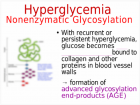Abstract
Research Article
Endogenus toxicology: Modern physio-pathological aspects and relationship with new therapeutic strategies. An integrative discipline incorporating concepts from different research discipline like Biochemistry, Pharmacology and Toxicology
Luisetto M*, Naseer Almukhtar, Behzad Nili Ahmadabadi, Gamal Abdul Hamid, Ghulam Rasool Mashori, Kausar Rehman Khan, Farhan Ahmad Khan and Luca Cabianca
Published: 14 January, 2019 | Volume 3 - Issue 1 | Pages: 001-024
Many pathologic disease can be considered as related to an Endogenous toxicological moves and in time dependent way (kinetics and dynamic of the process). In this work starting from the analysis of relevant literature involved with different disease and related to the endogenous local micro- environment some global conclusion useful as new tools for innovative pharmacological strategies will be submitted to the researcher. Physiology, pathology concept linked to the endogenous toxicological local micro-environment status as new research instruments. The same carcinogenesis process can be related also to endogenous agents that may have a major contribution in spontaneously process. (Reactive oxygen species (ROS), which are involved in multiple cellular processes by physiologically transporting signal as a second messenger or pathologically oxidizing DNA, lipids, and proteins).
Read Full Article HTML DOI: 10.29328/journal.acst.1001004 Cite this Article Read Full Article PDF
Keywords:
Endogenous toxicology; Physiology; Pharmacological strategies; New pathogenetic theories; Cancer; Metastasys
References
- Lakatos L, Pataki I, Balla G. Penicillamine - Neuroprotection against Neonatal Brain Injuries. Current Opinions in Neurological Science 2017; 1: 238-239. Ref.: https://goo.gl/RZ9UNu
- Luisetto M. Brain response in some systemic immune condition-Toxicological aspects. Insights Clin Cell Immunol. 2017; 1: 005-008. Ref.: https://goo.gl/jBPLMQ
- Luisetto M, Abadi BN, Mashori. Title Mindset Kinetics –Under Toxicological Aspect. Chronicles of Pharmaceutical Science. 2018; 1:: 369-371. https://goo.gl/FCdUht
- Maniscalco BS, Taylor KA. Calcifi cation in coronary artery disease can be reversed by EDT Atetracycline long-term chemotherapy. 2004; 11: 95-101. Ref.: https://goo.gl/GRwvzW
- Ross MK, Matthews AT, Mangum LC. Chemical Atherogenesis: Role of Endogenous and Exogenous Poisons in Disease Development. Toxics. 2014; 2: 17-34. Ref.: https://goo.gl/uH4SsF
- Paneni F, Beckman JA, Creager MA, Cosentino F. Published online 2013 May 2. Diabetes and vascular disease: pathophysiology, clinical consequences, and medical therapy: part I. Eur Heart J. 2013; 34: 2436–2443. Ref.: https://goo.gl/pXkRVP
- Luisetto M, Mashori GR, Nili-Ahmadabadi B, Khan FA, Khan KR. Mindset kinetics and some depression status: A new quantitative model under biochemical - toxicology approach? Insights Depress Anxiety. 2018; 2: 029-039. Ref.: https://goo.gl/3DBpZF
- Luisetto M, Naseer A, Ghulam RM, Ahmed YR, Farhan AK, et al. Endogenous Archeological Sciences: Anatomy, Physiology, Neuroscience, Biochemistry, Immunology, Pharmacology, Oncology, Genetics as Instrument for A New Field of Investigation? Modern Global Aspects for a New Discipline Open Access J Addict & Psychol. 1: 2018; 1-18. Ref.: https://goo.gl/466DfY
- Ma R, Feng Y, Lin S, Chen J, Lin H, et al. Mechanisms involved in breast cancer liver metastasis. J Transl Med. 2015; 13: 64. Ref.: https://goo.gl/wnpnHB
- Erler JT, Bennewith KL, Nicolau M, Dornhöfer N, Kong C, et al. Lysyl oxidase is essential for hypoxia-induced metastasis. Nature. 2006; 440: 1222-1226. Ref.: https://goo.gl/fEafBh
- Lutz WK, Fekete T. Endogenous and exogenous factors in carcinogenesis: limits to cancer prevention. Int Arch Occup Environ Health. 1996; 68: 120-125. Ref.: https://goo.gl/vMQYti
- Luisetto M. Intra- Local Toxicology Aspect Time Related in Some Pathologic Conditions. Open Acc J of Toxicol. 2017; 2: 002 555586. Ref.: https://goo.gl/JejVVq
- luisetto M, Ahmadabadi BN, Mashori GR. Heart disease new hypotesys: Under endogenous toxicological aspect. J Cardiol Cardiovasc Med. 2018; 3: 001-004. Ref.: https://goo.gl/e1awrc
- Swenberg JA, Lu K, Moeller BC, Gao L, Upton PB, et al. Endogenous versus Exogenous DNA Adducts: Their Role in Carcinogenesis, Epidemiology, and Risk Assessment. Toxicol Sci. 2011; 120 Suppl 1: S130-145. https://goo.gl/ZTK1fn
- Sim BK, MacDonald NJ, Gubish ER. Angiostatin and endostatin: endogenous inhibitors of tumor growth. Cancer Metastasis Rev. 2000; 19: 181-190. Ref.: https://goo.gl/X1eFmS
- Finch ER, Tukaramrao DB, Goodfield LL, Quickel MD, Paulson RF, et al. Activation of PPARγ by endogenous prostaglandin J2 mediates the antileukemic effect of selenium in murine leukemia. Blood 2017; 129: 1802-1810. Ref.: https://goo.gl/r7KigN
- Escobar-Khondiker M, Höllerhage M, Muriel MP, Champy P, Bach A, et al. Annonacin, a natural mitochondrial complex I inhibitor, causes tau pathology in cultured neurons. J Neurosci. 2007; 27: 7827-7837. Ref.: https://goo.gl/bbKDZG
- Xu J, Zhao M, Pei L, Zhang R, Liu X. et al. Oxidative stress and DNA damage in a long-term hexavalent chromium-exposed population in North China: a cross-sectional study. BMJ Open. 2018; 8: e021470. Ref.: https://goo.gl/m7Tiu4
- Luisetto M, Ahmadabadi BN, Ahmadabadi HN, Mashori GR, Hamid GA, et al. Similarity between Some Biological Systems, Organotropism and Metastatic Process: Active Role Played By Secondary Organ? Insights Biol Med. 2018; 2: 019-051. Ref.: https://goo.gl/1wcnDw
- Schwartz CJ, Kelley JL, Nerem RM, Sprague EA, Rozek MM, et al. Pathophysiology of the atherogenic process. Am J Cardiol. 1989; 64: 23G-30G. Ref.: https://goo.gl/tq2wxS
- Mogoantă SS, Vasile I, Totolici B, Neamţu C, Streba L, et al. Colorectal cancer - clinical and morphological aspects. Rom J Morphol Embryol. 2014; 55: 103-110. https://goo.gl/rAEyar
- Thakur MK, Ruterbusch JJ1, Schwartz AG1, Gadgeel SM1, Beebe-Dimmer JL, et al. Risk of Second Lung Cancer in Patients with Previously Treated Lung Cancer: Analysis of Surveillance, Epidemiology, and End Results (SEER) Data. J Thorac Oncol. 2018; 13: 46-53. Ref.: https://goo.gl/wN5qT4
- Luisetto M, Behzad N, Ghulam R M. Heart Disease New Hypotesys: Under Endogenous Toxicological Aspect. J Cardiol & Cardiovasc Ther 2018; 9: 555765. Ref.: https://goo.gl/7LDy3e
- Luisetto M, Nili-Ahmadabadi Bm, Mashori GR. Surgery and new Pharmacological strategy in some atherosclerotic chronic and acute conditions. Arch Surg Clin Res. 2017; 1: 042-048. Ref.: https://goo.gl/vCScb1
- West JD, Marnett LJ. Endogenous Reactive Intermediates as Modulators of Cell Signaling and Cell Death. Chem Res Toxicol. 2006; 19: 173-194. Ref.: https://goo.gl/osJu85
- Sim BK, MacDonald NJ, Gubish ER. Angiostatin and endostatin: endogenous inhibitors of tumor growth. Cancer Metastasis Rev. 2000; 19: 181-190. Ref.: https://goo.gl/6RBorZ
- Lutz WK, Fekete T. Endogenous and exogenous factors in carcinogenesis: limits to cancer prevention. Int Arch Occup Environ Health. 1996; 68: 120-125. Ref.: https://goo.gl/EuHCn5
- West JD, Marnett LJ. Endogenous Reactive Intermediates as Modulators of Cell Signaling and Cell Death. Chem Res Toxicol. 2006; 19: 173-194. Ref.: https://goo.gl/XZuJer
- Luisetto M, Ghulam RM, Behzad NA, Farhan AK, Kausar RK. Mindset kinetics and Some Depression Status: A New Quantitative Model Under Biochemical-Toxicology Approach? Insights Depress Anxiety. 2018; 2: 029-039. Ref.: https://goo.gl/U56v8X
- Patki G, Atrooz F, Alkadhi I, Solanki N, Salim S. High aggression in rats is associated with elevated stress, anxiety-like behavior, and altered catecholamine content in the brain. Neurosci Lett. 2015; 584: 308-313. Ref.: https://goo.gl/7U6c5x
- Wraith DC, Nicholson LB. The adaptive immune system in diseases of the central nervous. J Clin Invest. 2012; 122: 1172-1179. Ref.: https://goo.gl/BVCwpR
- Denison MS, Nagy SR. Activation of the Aryl Hydrocarbon Receptor by Structurally Diverse Exogenous and Endogenous Chemicals Annual Review of Pharmacology and Toxicology. Annu Rev Pharmacol Toxicol. 2003; 43: 309-334. Ref.: https://goo.gl/f3PKua
- Trosko JE, Madhukar BV, Chang CC. Endogenous and exogenous modulation of gap junctional intercellular communication: Toxicological and pharmacological implications. Life Sciences. 1993; 53: 1-19. Ref.: https://goo.gl/WdCVv2
- Deng B, Lv W, Duan W, Liu Y, Li Z, et al. Progressive Degeneration and Inhibition of Peripheral Nerve Regeneration in the SOD1-G93A Mouse Model of Amyotrophic Lateral Sclerosis. Cell Physiol Biochem. 2018; 46: 2358-2372. Ref.: https://goo.gl/eiLgXN
- Ross MK, Matthews AT, Mangum LC. Chemical Atherogenesis: Role of Endogenous and Exogenous Poisons in Disease Development. Toxics. 2014; 2: 17-34. Ref.: https://goo.gl/hPf6UQ
- Stancel GM, Boettger-Tong HL, Chiappetta C, Hyder SM, Kirkland JL, et al. Toxicity of endogenous and environmental estrogens: what is the role of elemental interactions? Environ Health Perspect. 1995; 103 Suppl 7: 29-33. Ref.: https://goo.gl/7igtmr
- Swenberg JA, Lu K, Moeller BC, Gao L, Upton PB, et al. Endogenous versus exogenous DNA adducts: their role in carcinogenesis, epidemiology, and risk assessment. Toxicol Sci. 2011; 120 Suppl 1: S130-145. Ref.: https://goo.gl/tSmDbY
- Marnett LJ, Plastaras JP. Endogenous DNA damage and mutation. Trends Genet. 2001; 17: 214-221. Ref.: https://goo.gl/D2vR5d
- Hussain SP, Harris CC. Molecular epidemiology and carcinogenesis: endogenous and exogenous carcinogens. Mutat Res. 2000; 462: 311-322. Ref.: https://goo.gl/h4KGVg
Figures:

Figure 1

Figure 2

Figure 3

Figure 4

Figure 5

Figure 6

Figure 7

Figure 8

Figure 9

Figure 10

Figure 11

Figure 12

Figure 13

Figure 14
Similar Articles
-
Predictors of Candidemia infections and its associated risk of mortality among adult and pediatric cancer patients: A retrospective study in Lahore, Punjab, PakistanHafiz Muhammad Bilal*,Neelam Iqbal,Shazia Ayaz. Predictors of Candidemia infections and its associated risk of mortality among adult and pediatric cancer patients: A retrospective study in Lahore, Punjab, Pakistan. . 2018 doi: 10.29328/journal.acst.1001003; 2: 001-007
-
Endogenus toxicology: Modern physio-pathological aspects and relationship with new therapeutic strategies. An integrative discipline incorporating concepts from different research discipline like Biochemistry, Pharmacology and ToxicologyLuisetto M*,Naseer Almukhtar,Behzad Nili Ahmadabadi,Gamal Abdul Hamid,Ghulam Rasool Mashori,Kausar Rehman Khan,Farhan Ahmad Khan,Luca Cabianca. Endogenus toxicology: Modern physio-pathological aspects and relationship with new therapeutic strategies. An integrative discipline incorporating concepts from different research discipline like Biochemistry, Pharmacology and Toxicology . . 2019 doi: 10.29328/journal.acst.1001004; 3: 001-024
-
Insilico investigation of TNFSF10 signaling cascade in ovarian serous cystadenocarcinomaAsima Tayyeb*,Zafar Abbas Shah. Insilico investigation of TNFSF10 signaling cascade in ovarian serous cystadenocarcinoma. . 2019 doi: 10.29328/journal.acst.1001005; 3: 025-034
-
Risk factors of survival in breast cancerAkram Yazdani*. Risk factors of survival in breast cancer. . 2019 doi: 10.29328/journal.acst.1001007; 3: 042-044
-
Risk factor of liver metastases in breast cancerAkram Yazdani*. Risk factor of liver metastases in breast cancer. . 2019 doi: 10.29328/journal.acst.1001011; 3: 063-065
-
Chlorhexidine and oral cancer: A short reviewShrivardhan R Kalghatgi*,Mahesh R Khairnar,Tanushri Dalvi. Chlorhexidine and oral cancer: A short review. . 2020 doi: 10.29328/journal.acst.1001012; 4: 001-002
-
A retrospective study for Colorectal Cancer in Vlore, Albania-suggestions for further implicationsFatjona Kamberi*,Jerina Jaho. A retrospective study for Colorectal Cancer in Vlore, Albania-suggestions for further implications. . 2020 doi: 10.29328/journal.acst.1001013; 4: 003-006
-
Vegetables associated with reduced risk of cancerRobert Skopec*. Vegetables associated with reduced risk of cancer. . 2020 doi: 10.29328/journal.acst.1001014; 4: 007-014
-
Palliative care approach to oncological patient – Main pointsOnur Öztürk*,Muhammed Emin Göktepe,Mustafa Ünal. Palliative care approach to oncological patient – Main points. . 2020 doi: 10.29328/journal.acst.1001015; 4: 015-016
-
Minimally invasive gracilis muscle transposition: Initial reportTobias Machado*,Anis Taha. Minimally invasive gracilis muscle transposition: Initial report. . 2020 doi: 10.29328/journal.acst.1001016; 4: 017-018
Recently Viewed
-
Deep Learning-Powered Genetic Insights for Elite Swimming Performance: Integrating DNA Markers, Physiological Biometrics and Performance AnalyticsRahul Kathuria,Reeta Devi,Asadi Srinivasulu*. Deep Learning-Powered Genetic Insights for Elite Swimming Performance: Integrating DNA Markers, Physiological Biometrics and Performance Analytics. Int J Bone Marrow Res. 2025: doi: 10.29328/journal.ijbmr.1001020; 8: 006-015
-
Pure Erythroid Leukemia: The Sole Acute Erythroid LeukemiaFauzia Shafi Khan*,Khalid Mahmood,Alia Ahmad. Pure Erythroid Leukemia: The Sole Acute Erythroid Leukemia. Int J Bone Marrow Res. 2017: doi: 10.29328/journal.ijbmr.1001001; 1: 001-005
-
Causal Link between Human Blood Metabolites and Asthma: An Investigation Using Mendelian RandomizationYong-Qing Zhu, Xiao-Yan Meng, Jing-Hua Yang*. Causal Link between Human Blood Metabolites and Asthma: An Investigation Using Mendelian Randomization. Arch Asthma Allergy Immunol. 2023: doi: 10.29328/journal.aaai.1001032; 7: 012-022
-
The alterations effects in phosphorus of erythropoietin and U-74389GC Τsompos*,C Panoulis,A Triantafyllou,CG Zografos,K Tsarea,M Karamperi,A Papalois. The alterations effects in phosphorus of erythropoietin and U-74389G. Int J Bone Marrow Res. 2020: doi: 10.29328/journal.ijbmr.1001012; 3: 021-026
-
Adalimumab in the Treatment of Complex Sarcoidosis-related Inflammatory Eye Disease: A Case SeriesMina Al-Awqati, Supritha Prasad*, Valeria Esparza, Jacqueline Jansz, Wuily Carpio, Christian Ascoli, Huan Chang, Pooja Bhat, Ann-Marie Lobo-Chan, Nadera Sweiss. Adalimumab in the Treatment of Complex Sarcoidosis-related Inflammatory Eye Disease: A Case Series. Arch Vas Med. 2024: doi: 10.29328/journal.avm.1001018; 8: 001-003
Most Viewed
-
Impact of Latex Sensitization on Asthma and Rhinitis Progression: A Study at Abidjan-Cocody University Hospital - Côte d’Ivoire (Progression of Asthma and Rhinitis related to Latex Sensitization)Dasse Sery Romuald*, KL Siransy, N Koffi, RO Yeboah, EK Nguessan, HA Adou, VP Goran-Kouacou, AU Assi, JY Seri, S Moussa, D Oura, CL Memel, H Koya, E Atoukoula. Impact of Latex Sensitization on Asthma and Rhinitis Progression: A Study at Abidjan-Cocody University Hospital - Côte d’Ivoire (Progression of Asthma and Rhinitis related to Latex Sensitization). Arch Asthma Allergy Immunol. 2024 doi: 10.29328/journal.aaai.1001035; 8: 007-012
-
Causal Link between Human Blood Metabolites and Asthma: An Investigation Using Mendelian RandomizationYong-Qing Zhu, Xiao-Yan Meng, Jing-Hua Yang*. Causal Link between Human Blood Metabolites and Asthma: An Investigation Using Mendelian Randomization. Arch Asthma Allergy Immunol. 2023 doi: 10.29328/journal.aaai.1001032; 7: 012-022
-
An algorithm to safely manage oral food challenge in an office-based setting for children with multiple food allergiesNathalie Cottel,Aïcha Dieme,Véronique Orcel,Yannick Chantran,Mélisande Bourgoin-Heck,Jocelyne Just. An algorithm to safely manage oral food challenge in an office-based setting for children with multiple food allergies. Arch Asthma Allergy Immunol. 2021 doi: 10.29328/journal.aaai.1001027; 5: 030-037
-
Snow white: an allergic girl?Oreste Vittore Brenna*. Snow white: an allergic girl?. Arch Asthma Allergy Immunol. 2022 doi: 10.29328/journal.aaai.1001029; 6: 001-002
-
Cytokine intoxication as a model of cell apoptosis and predict of schizophrenia - like affective disordersElena Viktorovna Drozdova*. Cytokine intoxication as a model of cell apoptosis and predict of schizophrenia - like affective disorders. Arch Asthma Allergy Immunol. 2021 doi: 10.29328/journal.aaai.1001028; 5: 038-040

If you are already a member of our network and need to keep track of any developments regarding a question you have already submitted, click "take me to my Query."


















































































































































